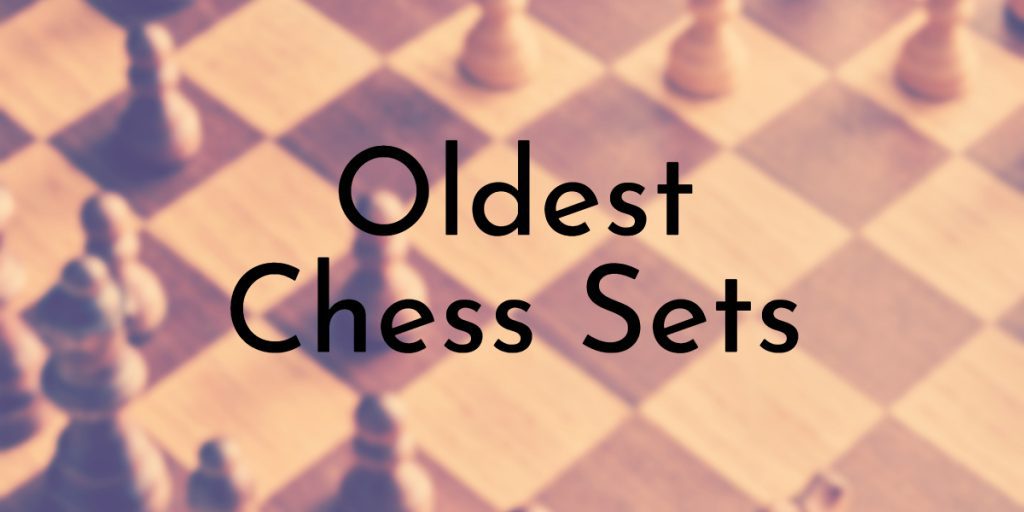Chess, the “game of kings,” has facinated players for centuries. Its exact origins are unknown but it is thought to have begun as a 6th-century Indian game known as chaturanga. Over time it migrated to Persia, where it was known as shatranj. From there, it spread across the Muslim world to medieval Europe. Over time, the pieces and the rules evolved until it became the game we know now.
Today, it is played all over the world.
Single chess/chaturanga pieces have been found that date back as far as the 5th century; however, complete or even partial sets from before the 17th century are very rare. Following are some of the oldest known chess sets in existence.
9. Russian Chess Set
Date: Late 18th century
Country of Origin: Russia
Medium: Walnut, walrus ivory, wood
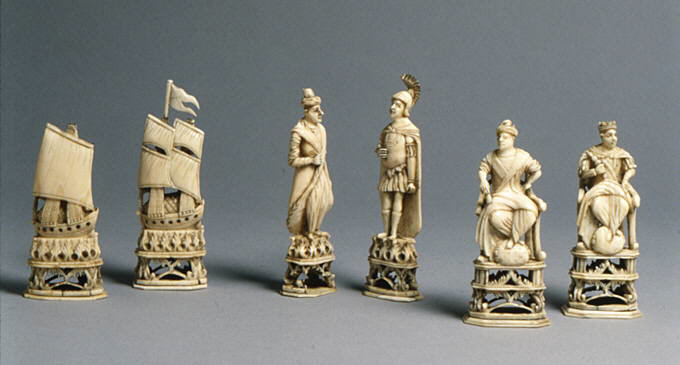
Chess was extremely popular among the Russian upperclasses, and appears to have been introduced from India, perhaps as far back as the 9th century.
This complete set is thought to have originated in Kholmogory, a Russian town famous for its carvers, in the late 1700s. It is notably different from modern sets in several key respects. The two sides represent Muslims and Christian Russians and are differentiated by style, not by color. Instead of a queen, there is a vizier. Ships stand in for rooks, and the bishop piece is represented by elephants.
Did You Know?
The bishop piece is a relatively modern European invention. In early and non-European chess sets, that piece was represented by an elephant.
8. Indian Chess Set
Date: Late 18th century
Country of Origin: India
Medium: Elephant ivory
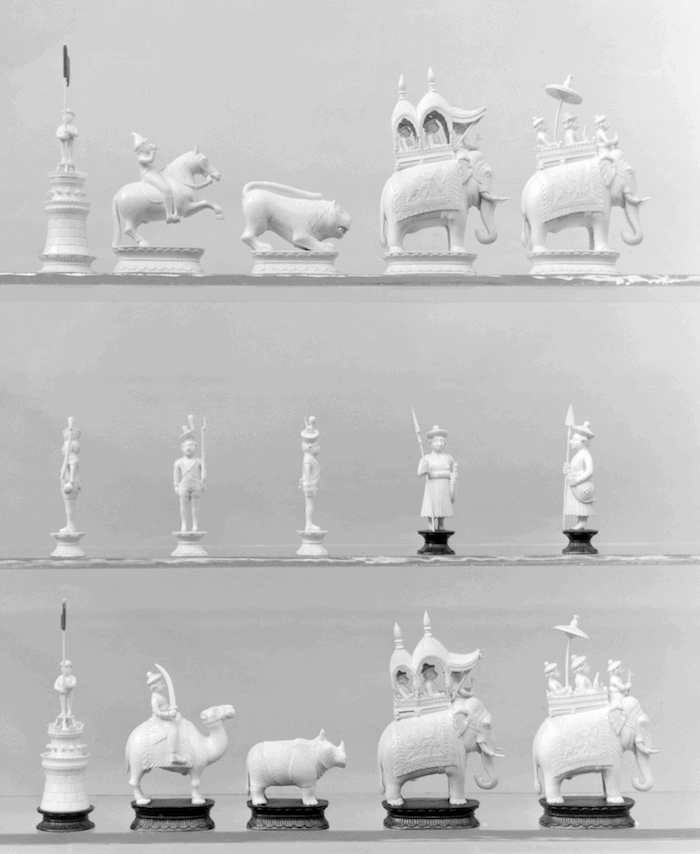
This delicate ivory set was most likely decorative, and not intended for playing purposes.
The opposing sides are represented by Indians on the one hand and British on the other, reflecting the political realities of the time. The kings on both sides are represented by rajahs riding on elephants. Interestingly, the elephant/bishop has been replaced by a lion on the British side and a rhinosceros on the Indian side. Knights are represented by a British calavryman and an Indian cameleer. The pawns are represented by British and Indian soldiers, respectively.
Did You Know?
In Indian chess sets, the bishop is often represented by a camel.
7. Lewis (Uig) Chessmen
Date: 12th century
Country of Origin: Norway
Medium: Walrus tusk; some pieces are made of whale teeth
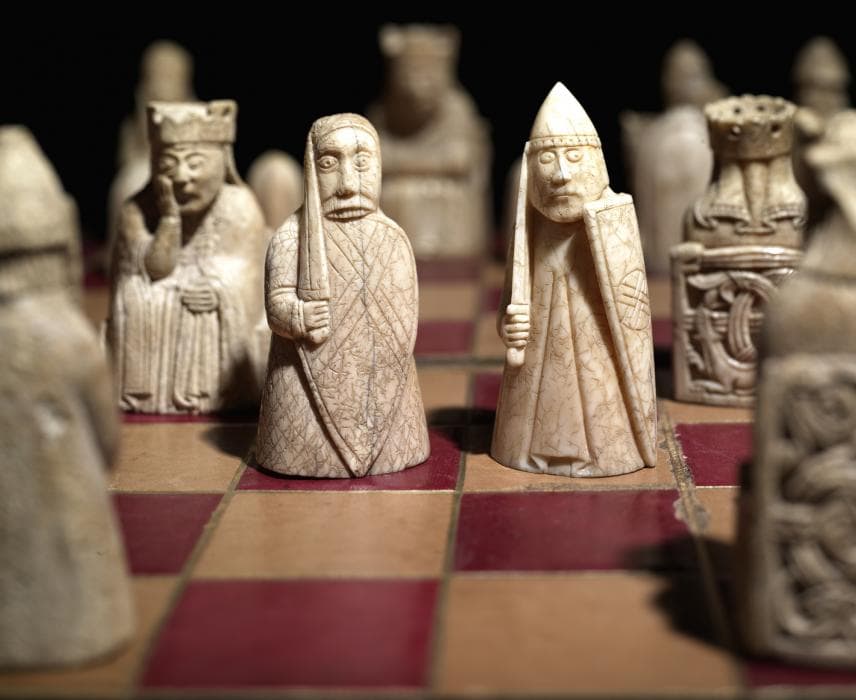
This stunningly detailed set was found in 1891 in the Outer Hebrides of Scotland. However, it is thought to have originated in Trondheim, the medieval capital of Norway. Norway ruled the Hebrides at the time these pieces were made, and a similarly styled pieces from the same era have been found in Trondheim.
There are 79 pieces altogether, with multiple kings, queens and other pieces, suggesting that they were part of multiple sets. This, along with their lack of wear, has led some historians to speculate that they were part of a merchant’s inventory, somehow lost en route from Norway to Ireland.
This set contains the oldest known ecclesiastical bishop.
Did You Know?
This set was found in Uig Parish on the Isle of Lewis and is known as both the Lewis Chessmen and the Uig Chessmen.
6. Charlemagne Chess Set
Date: c. 1100
Country of Origin: Italy
Medium: Elephant ivory
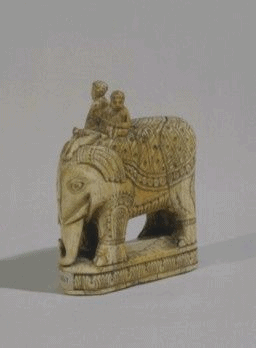
The Emperor Charlemagne himself died at least three centuries before this set was made and probably never even played chess. Nonetheless, his name was given to this exquisite ivory pieces, which are thought to have been made in the last quarter of the 11th century in Salerno, Italy.
It is speculated that the pieces were a gift to a French king, either Philip II or Philip III. From the 13th century the end of the 18th, the set resided in the Saint Denis Abbey near Naples, and was brought to Paris in 1794.
Sadly, several pieces were lost during the French Revolution. Today, the set consists of two kings, two queens, four elephants, four knights, three chariots and one foot soldier.
Did You Know?
The game’s Indian heritage is clear from the elephant pieces, but the military equipment is 11th century Norman.
5. Persian Chess Set
Date: late 11th to early 12th century
Country of Origin: Fritware; molded and glazed
Medium: Iran

This is one of the earliest-known complete chess sets in the world, but its abstract shapes look strikingly modern. It is thought that the abstract nature is a result of the Islamic prohibition against representing human forms in art.
The shah (king) and firzan (vizier or queen) are represnted by stylized thrones. The fils (bishop) is an elephant, as it is in many pre-European sets, and the faras (knight) is represented by a horse. This style was associate with chess sets in both the Middle East and Europe for centuries.
Did You Know?
Fritware, also known as stonepaste, is a type of ceramic in which ground quartz or glass is mixed with clay. This created a stronger ceramic that could be fired at lower temperatures.
4. Ager Chessmen
Date: 1021
Country of Origin: Unknown; possibly Egypt
Medium: Rock crystal
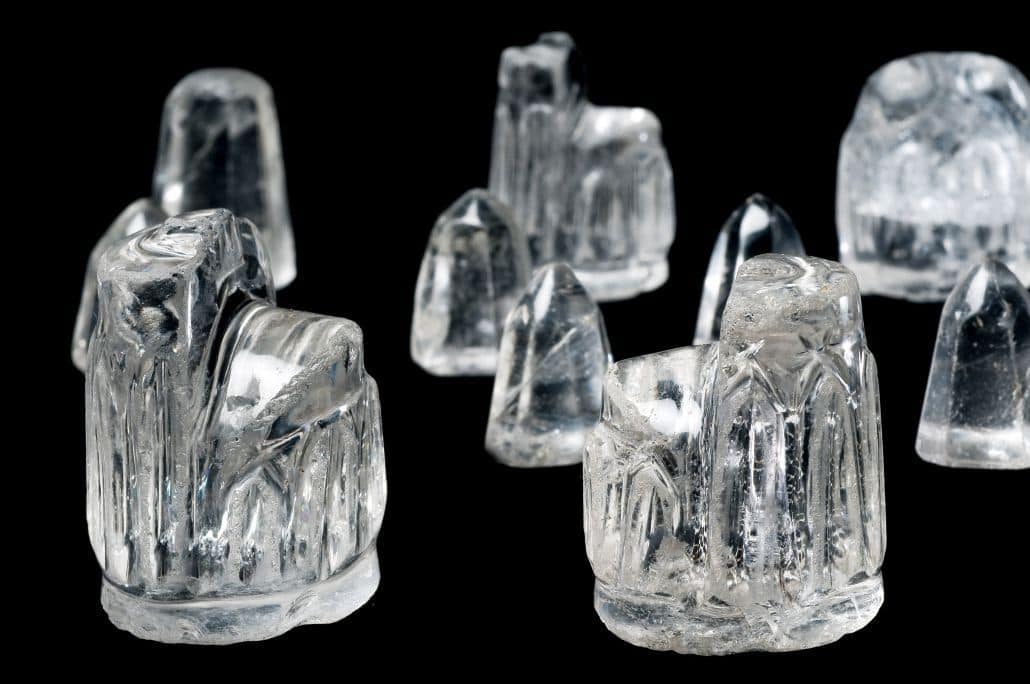
It is thought that chess may have been brought from Bahgdad to Muslim Spain in the 800s and spread from there to the rest of Europe. While this set was found in Ager, Spain, the rock crystal that it’s made of suggest that it originated outside of Spain, possibly in Egypt.
Also known as the Urgel or Urgell chessmen, after a village nearby in Catalonia, this set has unfortunately been split up, and some pieces have vanished altogether. Some remain in Ager, others are in Lerida, Spain. In the late 19th century, a few were taken to Paris, where they were auctioned and bought purchased by the Emir of Kuwait. They remain in Kuwait to this day.
Did You Know?
This set originally belonged to Arnau Mir de Tost, lord of Àger, and his wife, who owned many works of Islamic art.
3. Mozarab
Date: 10th Century
Country of Origin: Found in Leon, Spain
Medium: Deer antler
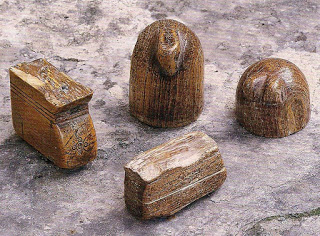
The Mozarab chess pieces, also known as the pieces of Saint Genadio, may be as old as the beginning of the 10th century. The term “Mozarab” refers to the Spanish Christians who lived under Muslim rule in the 8th–11th centuries.
Genadio de Astorga (900-936), the Bishop of Astorga, was the first Christian saint said to have played chess. Folklore has it that these pieces belonged to him. They remain in the care of the Monastery of San Miguel de la Escalada, in Leon, Spain.
Did You Know?
The Mozarab represented a combination of Islamic and European influences and has become known as a distinct architecture and artistic style.
2. Venafro Chess Set
Date: 885-1017 CE
Country of Origin: EU
Medium: Deer antler
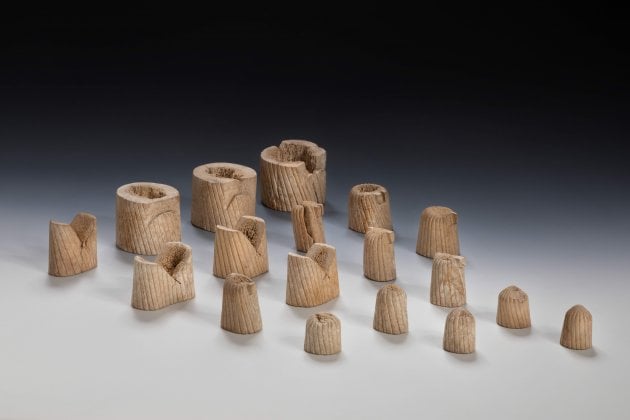
Discovered in 1932 and dating to between the 9th and 11th centuries, these 19 piecs are thought to be the oldest European chessmen. Fascinatingly, they were discovered in a much older Roman tomb.
Venafro was occupied by Islamic forces in the 9th and 10th century, so an Arabic-style chess set in Italy is perhaps not such a surprise. How they came to be in an ancient Roman tomb remains a mystery, however.
Did You Know?
It is thought that over time, the two tusks of the elephant (an animal that most Europeans wouldn’t have been familiar with) gradually turned into a shape thought to resemble a bishop’s miter, hence the modern bishop piece.
1. Afrasiab Chessmen
Date: 700-760 CE
Country of Origin: Uzbekistan
Medium: Elephant ivory
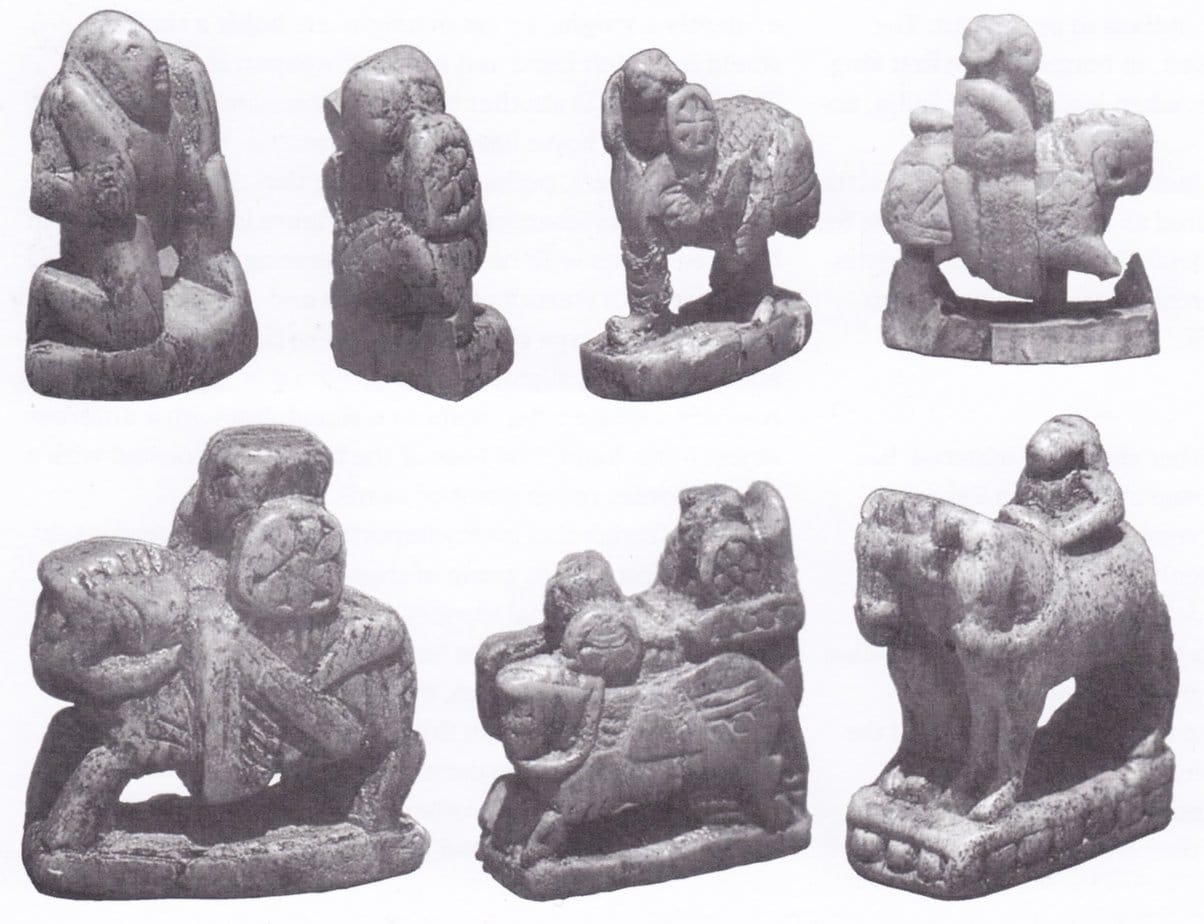
The Afrasiab Chessmen is the oldest-known chess set. Among the many treasures found at the Afrasaib excavation site in modern-day Uzbekistan were seven pieces from the earliest version of chess, chataranga. The archeologist who found them, Jurij F. Burjakov, dated them to the early 8th century.
The pieces consist of a king, chariot (rook), vizier (queen), horse (knight), elephant (bishop), and 2 soldiers (pawns).
Did You Know?
The word “rook” comes from the Persian “rukh,” meaning chariot.
OTHER POSTS YOU MAY BE INTERESTED IN


